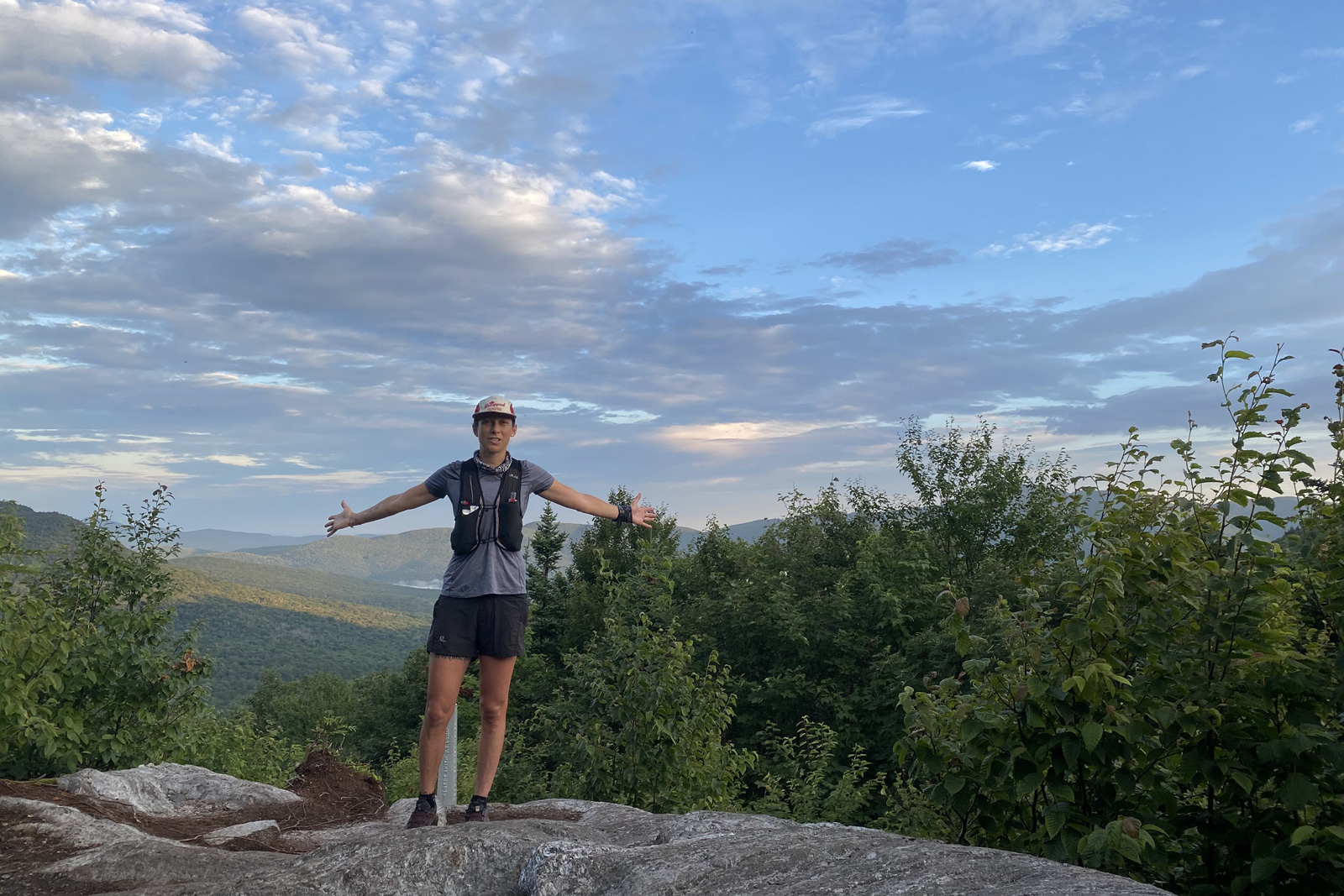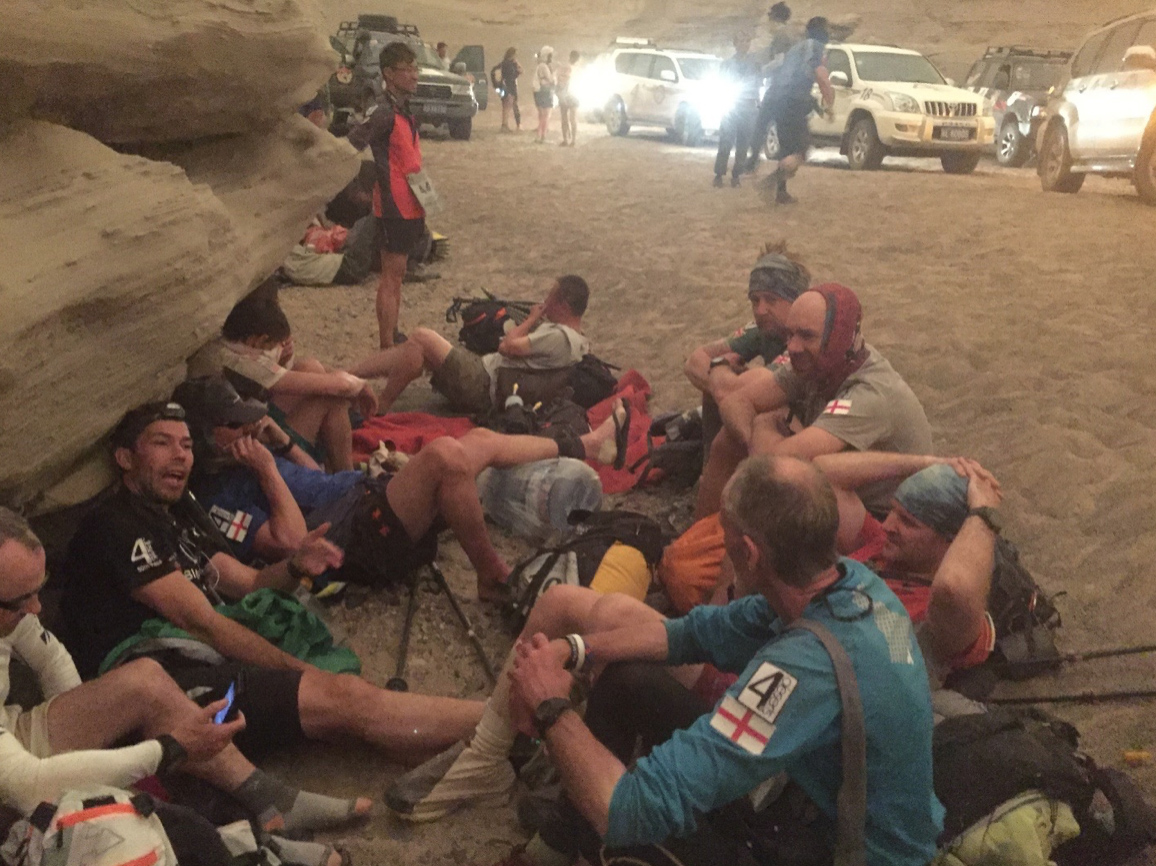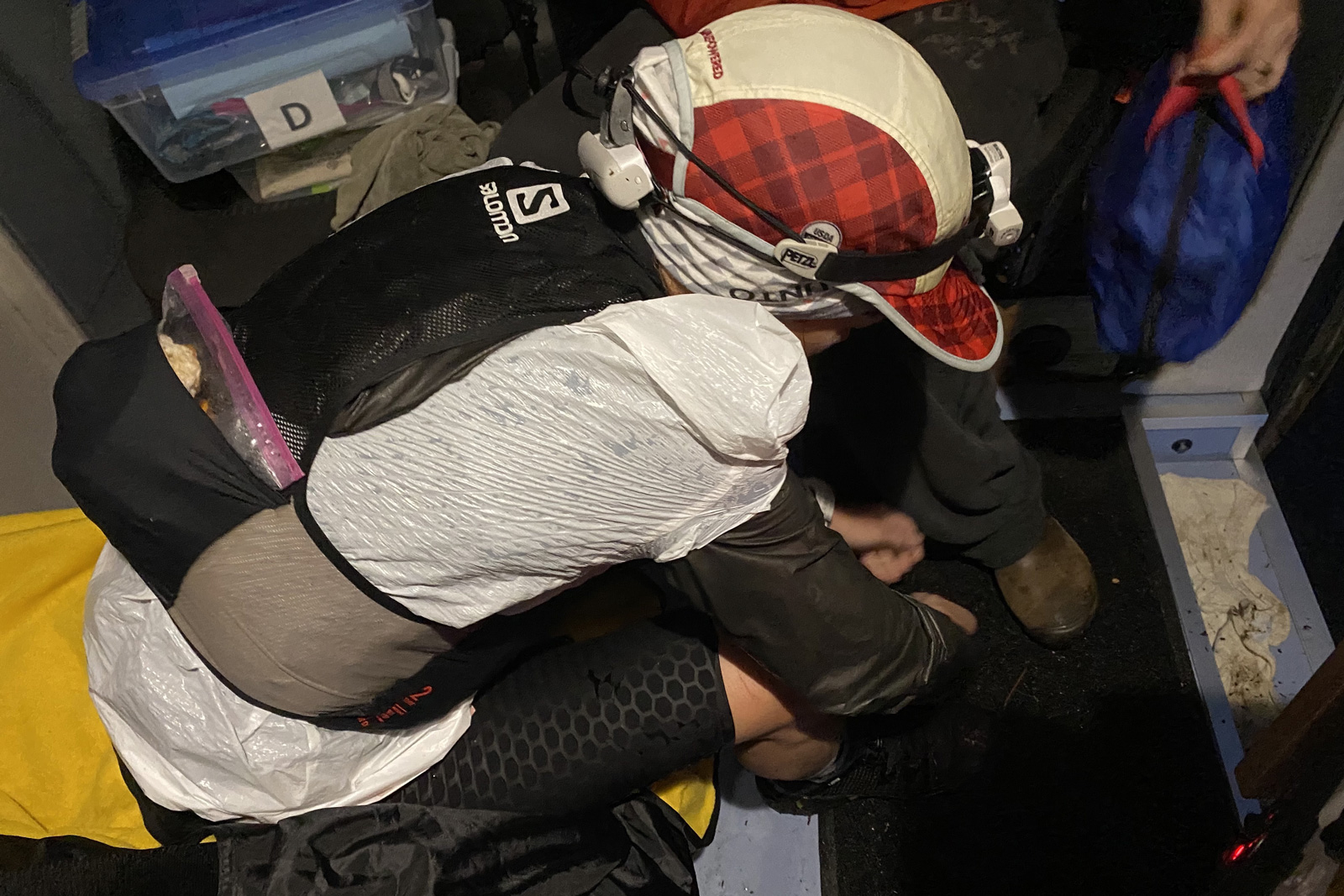Here are some helpful tips for the next time you join a race support crew to help a friend go for an FKT or ultra-event.
In August 2020, I volunteered to be part of the support crew for Aliza LaPierre, a Salomon- and Untapped-sponsored ultrarunner who was attempting an FKT on Vermont’s Long Trail. I had no idea what I was in for.
I’m an amateur athlete, but crewing for LaPierre was way harder than any athletic pursuit I’ve ever taken on. It was a thousandth of the hardship that she endured, running for 5 days through 4 inches of rain (courtesy of Hurricane Isaias) on some of the most rugged thru-hiking trails in the country.
When it was over and done — LaPierre didn’t make her goal (but she will) — I started thinking about how I could have done better supporting her in her attempt. After all, with the pandemic, many athletes are tackling bucket list goals.
If you get asked to help a friend, here’s a list of what you need to know and how to do your best to help them achieve their goal, according to Jason Koop. Koop serves as the head ultrarunning coach for Carmichael Training Systems and authored the book titled “Training Essentials for Ultrarunning.”

How to Support Crew: Dos
Your participation is in service to the athlete.
Remember that the athlete is paramount in everything you do. “If the support crew is focused on doing whatever it takes to get the athlete from A to B, that sets the tone for everything,” Koop said. “When that goes awry, it can compromise the athlete’s goal.”
Be sure you’re up to the task.
“People want to help. But sometimes that help is more harmful than helpful. You can’t leave your partner in the woods,” Koop advises. “If a pacer can’t keep up, if you show up for a night section without a headlamp — do anything to slow the athlete’s effort or to add physical or mental stress — you’d help more by staying home.”
Respect the chain of command.
An athlete should establish a chain of command for dealing with emergencies. If they don’t defer to the crewmember with the most medical experience, someone needs to intervene. If an athlete directs that they’re only stopping if a bone is sticking out of their leg, be ready to respect that.
Establish triage in advance for medical events.
“You need a plan to fall back on,” Koop said. “You may second guess your decisions afterward, but it’s really important to have a protocol to follow. Then there will be no confusion of multiple opinions, which is where errors happen. Sometimes people are genuinely trying to help, but without direction, clarity, and experience, they can do more harm than good.”
Be flexible.
You might end up pacing a leg, grocery shopping, or prepping half a dozen different meals trying to guess what the athlete is craving. Be available to do what needs to be done.

Prepare to drive a lot.
Pacer cars may need to be shuttled, and while the athlete is making a beeline on the trail they’re attempting, you’re going to be taking the long way to intersect them, which is often a circuitous course.
Be prepared to go without sleep.
Even with tracker and cellphones, you may have no idea what time your athlete is getting to the next support stop or what needs to be dealt with in the interim.
Bring extra everything.
From clothing to first aid to snacks and drink mixes, if the weather changes, you may need to get your athlete more clothing or food.

Appreciate the experiences you have thanks to the FKT.
Maybe you’ll hike a peak on a foggy, full-moon night packing in snacks to an athlete. Or you’ll get to jump in a swimming hole you never knew existed. By supporting the athlete, you’ll likely be some places you wouldn’t otherwise, possibly at an unexpected time of day.
Support all the way, no matter what.
Know that even if the athlete doesn’t succeed at their goal, they may still want to finish the quest. So have as much schedule flexibility as you can while supporting them.
Have your setup dialed.
If you’re camping along the route, make sure you can set up quickly and that you have everything you need charged, prepped, and in place so you can grab it fast.
Expect the unexpected.
“It could be the weather, the athlete might get rerouted or lost, or there could be some kind of animal encounter,” Koop said. You have to be able to respond to any number of challenges — known or unknown.
Be ready to work harder than you ever have.
“It’s almost impossible to imagine how hard it is as a support crew. It’s intensive. But it’s still a very extremely small fraction of how hard it is for the athlete,” said Koop.
“When crews come up against that unexpected exhaustion, it’s hard for them to keep in mind how to understand the difficulty of the athlete’s experience. A race support crew’s exhaustion is not even close to what the athlete is experiencing. What they are undertaking is harder, bigger, and more audacious. That’s critical to keep in mind.”

Be in the moment.
“Even if there’s a spreadsheet that says the athlete will be at a particular place at 10 a.m., the predictability of that is on the lower end of the spectrum,” said Koop. “Trying to forecast is a fool’s errand.”
Do your research.
“Do some research before becoming part of the support crew. Get to know what you’re getting yourself into, how long the athlete will be working toward their goal, how much climbing they’ll do, if there are other trails that intersect, if there are water sources on the route, any unique history of the trail — and anything else you can think of,” Koop recommended.
“An athlete won’t ask you to prep for the event, but knowing as much as you can is important from a tactical perspective. It also shows the athlete that you care. If you can tell the athlete there’s a shelter a mile away, it shows the athlete that you give a shit, and that you’re not just there to get your own hike in.”
Do a shred of research on exactly what you’re doing. It shows the athlete that you’re vested in the whole project, which can provide a meaningful mental boost.
Less is more when it comes to how many people are on an athlete’s crew.
“There is a tipping point where there are too many people trying to help,” said Koop. “There is no magic number, but don’t take it personally if the athlete says ‘thanks, but no’ if you offer to crew.”
Understand that you’re not going to understand.
Knowing much of what happens won’t make sense will make the weirdness that inevitably happens on the trail more acceptable. It’s extremely difficult to understand what an athlete is going through when they’re competing in an ultraendurance event or attempting an FKT.
“If you can wrap your head around not understanding, it ends up working out in more cases than not,” said Koop.
How to Support Crew: Don’ts
Whine.
Whether you’re tired, hungry, bored, or anything else, keep it to yourself. The FKT is not about you. And however hard it is that you’ve only had two cups of hot coffee before driving around for hours, your suffering can’t hold a candle to what the athlete is experiencing.
Get in the way.
The athlete may be working with a doctor or a coach. Be near in case you can assist by providing supplies, but don’t take up space in the athlete’s inner circle when you’re nonessential.
Add drama to the event in any way.
Always remember that the goal is to support the athlete, so avoiding unnecessary distractions is a must.

